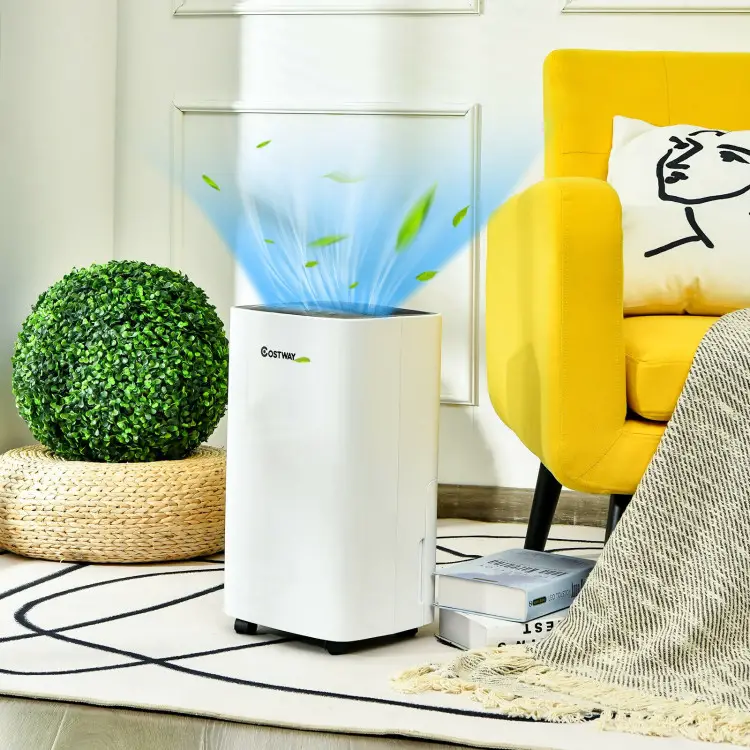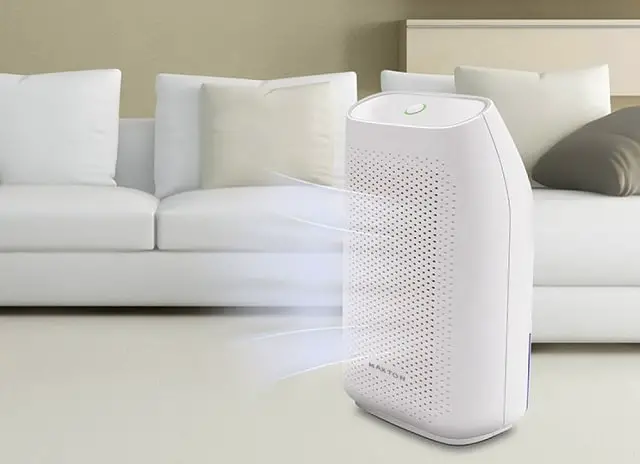
We decided to figure out what disadvantages of a dehumidifier may arise in the process of using it. In this article, we have collected the maximum list of such shortcomings.
What is an dehumidifier and how does it work?
A dehumidifier is an electrical appliance that is designed to reduce and control the humidity levels in indoor spaces. It works by drawing in moist air, passing it over cold coils to condense the moisture into water, and then expelling the drier air back into the room. The collected water is typically collected in a reservoir or drained out through a hose.

High humidity levels: If you notice that the air in your home feels excessively moist or muggy, and your indoor humidity levels consistently measure above 50%, a dehumidifier can help reduce the excessive humidity, and create a more comfortable living environment.
Condensation and moisture issues
If you see condensation on windows, walls, or other surfaces in your home, or if you have mold or mildew growth in certain areas, a dehumidifier can help by reducing excess moisture in the air and preventing condensation and mold growth.
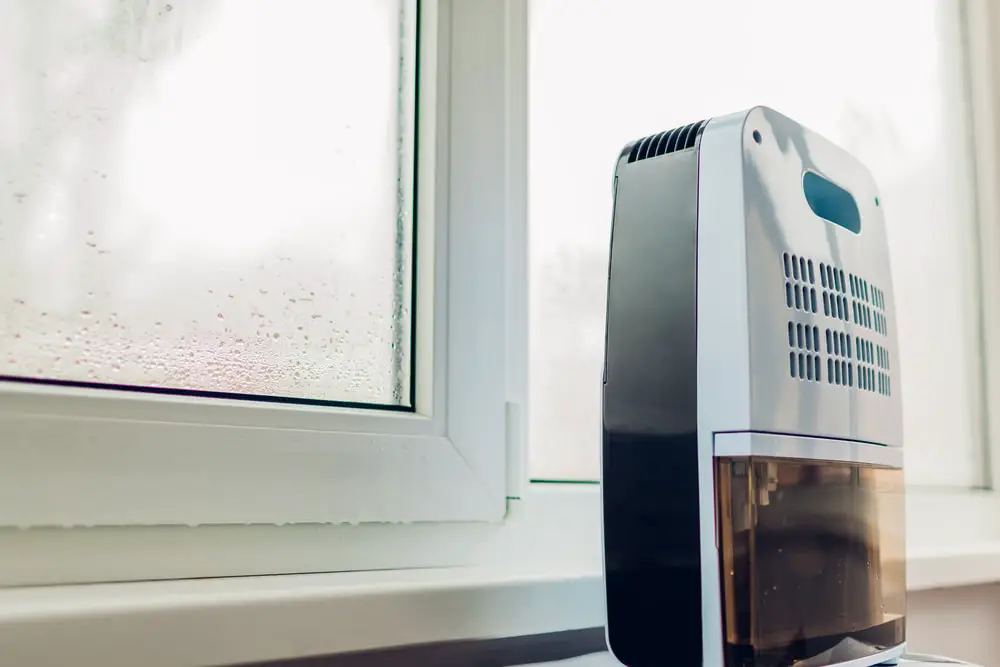
Musty odors
If you notice musty odors in your home, it may be a sign of excess moisture in the air and potential mold or mildew growth. A dehumidifier can help reduce the moisture levels with dry air and eliminate the musty smell.
Allergy or respiratory issues
If you or someone in your home suffers from allergies, asthma, or other respiratory issues, a dehumidifier can help improve indoor air quality by the moisture level reducing airborne allergens such as dust mites, mold spores, and mildew, which thrive in more humid air and environments.
Water damage or flooding
If your home has experienced water damage from flooding or leaks, a dehumidifier can help dry out the affected areas and prevent further damage from moisture buildup.
10 top disadvantages of a dehumidifier
Air dehumidifiers are indeed helpful in reducing excess moisture in a home’s air, which can have several benefits. However, like any household appliance, dehumidifiers also have some potential disadvantages to consider.
1. The exhaust airflow from dehumidifiers cold
The exhaust airflow from dehumidifiers can indeed be bothersome in certain situations. In compressor-type dehumidifiers, the air coming out of the device can feel cold, especially when the air dehumidifier itself is operated at lower temperatures around 60 degrees Fahrenheit (15 degrees Celsius). This is because the dehumidifier may need to enter defrost mode to prevent freezing, which can result in colder air being discharged from the unit. On the other hand, desiccant dehumidifiers may discharge air that is about 50 degrees Fahrenheit (10 degrees Celsius) higher than the room temperature, which can be uncomfortable in already hot rooms.
2. Noise level
The noise level of a dehumidifier can indeed vary depending on the model being used. On average, dehumidifiers can produce noise levels of up to 65 decibels (dB). However, this how much noise made can vary depending on the type of dehumidifier. Desiccant dehumidifiers tend to make less noise and be quieter, with noise levels often around 40 dB, while compressor dehumidifiers can produce around 50 dB of noise.
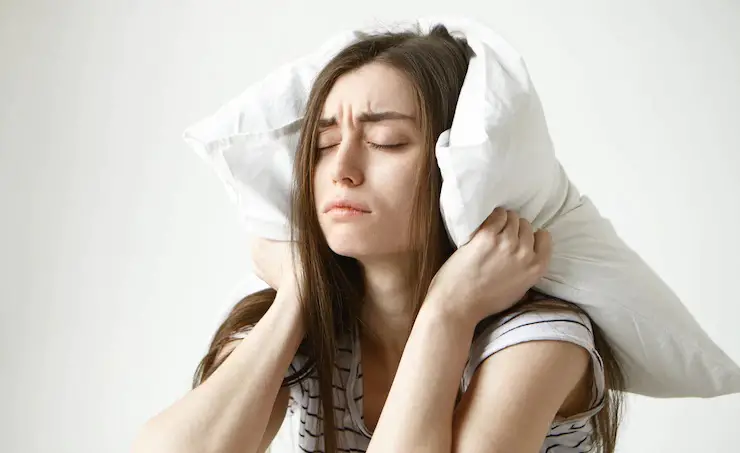
3. Dehumidifier not work in low temperature
Some dehumidifiers may not work optimally or at all in low temperatures, depending on the model being used. Compressor dehumidifiers, in particular, may experience reduced efficiency or complete failure in temperatures below 15°C (60°F). This is because compressor dehumidifiers rely on creating a cold surface for water vapor to condense on, and as temperatures drop, the efficiency of this process decreases. In some cases, the mechanism can even freeze, causing the dehumidifier to stop working.
On the other hand, desiccant dehumidifiers, which use a water-absorbing desiccant, can typically work in lower temperatures, even below 0°C (32°F). This makes them more suitable for use in colder air drier environments where compressor dehumidifiers may not be as effective.
4. Maintenance dehumidifiers
Regular maintenance dehumidifiers is necessary for their to continue operating effectively. Dehumidifiers with a full storage tank require frequent emptying of the water tank to ensure continuous removal of water vapor from the air. Only dehumidifiers with a hose and pump can bypass this requirement. In addition to emptying the water tank, regular maintenance also includes cleaning and replacing filters, dusting the device, and checking components for wear and tear.
It’s important to note that emptying the water tank can be a repetitive task, especially in high-humidity environments, and may require frequent attention. However, if you have a dehumidifier with a pump and hose setup, you can avoid this task by positioning drain hose of the device near a sink for continuous drainage.
5. Source of mold and bacteria growth
It’s important to note that if a dehumidifier is not properly maintained and cleaned, it can become a source of mold and bacteria growth. The water collected in the dehumidifier’s water container or reservoir can become a breeding ground for mold and bacteria if not emptied and cleaned regularly.
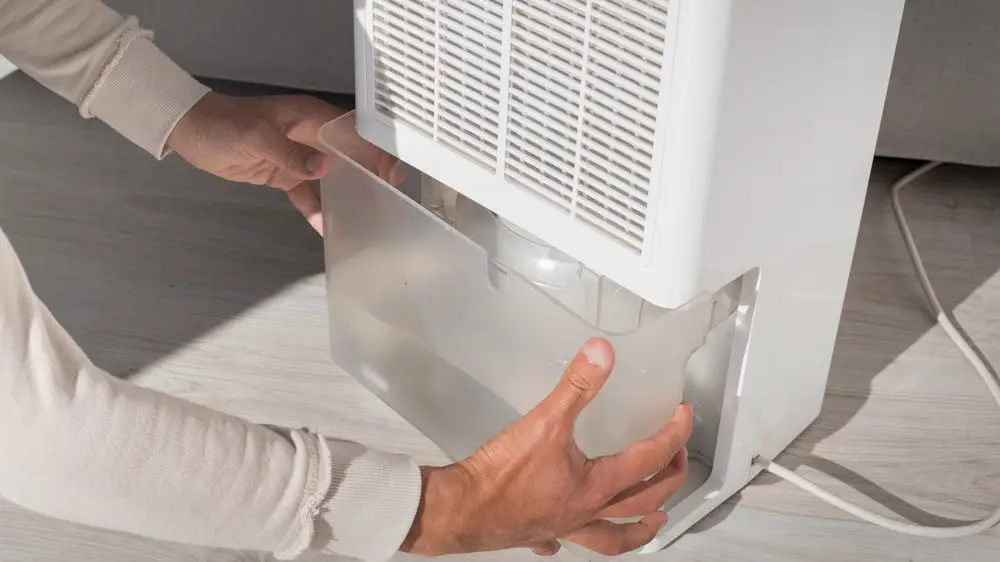
If the water collected in the dehumidifier’s water tank is not emptied in a timely manner, it can create a stagnant environment that is conducive to mold growth. Mold spores are common allergens and can trigger respiratory issues such as asthma and allergies. Therefore, it’s important to empty and clean the dehumidifier’s water container regularly, following the manufacturer’s instructions, to prevent the accumulation of mold and bacteria.
6. Over-drying
Dehumidifiers produce heat as a byproduct of the dehumidification process. While the amount of heat generated by dehumidifiers may vary depending on the model and capacity, it’s worth noting that dehumidifiers can add heat to the room they are operating in. This can be particularly noticeable during the summer months or in areas with hot climates, which can result in increased discomfort or higher energy bills for cooling.
If a dehumidifier is set to operate at very low relative humidity and levels or left running for long periods without monitoring, it can potentially over-dry the air, resulting in overly dry indoor air, which may not be comfortable for occupants, especially during winter months when the air is already dry. Additionally, excessively dry air can result in discomfort such as dry throat, nose, and skin irritation.
It’s important to consider the specific needs of your home, climate, and situation when determining when to pull the plug on your dehumidifier.
7. Dehumidifier size and weight
It’s important to consider the size and weight of a dehumidifier when selecting one for your own living space. Larger and heavier dehumidifiers may require more space for installation and can be more difficult to move around. On the other hand, smaller and lighter dehumidifiers may be more suitable for smaller spaces or for portability purposes.
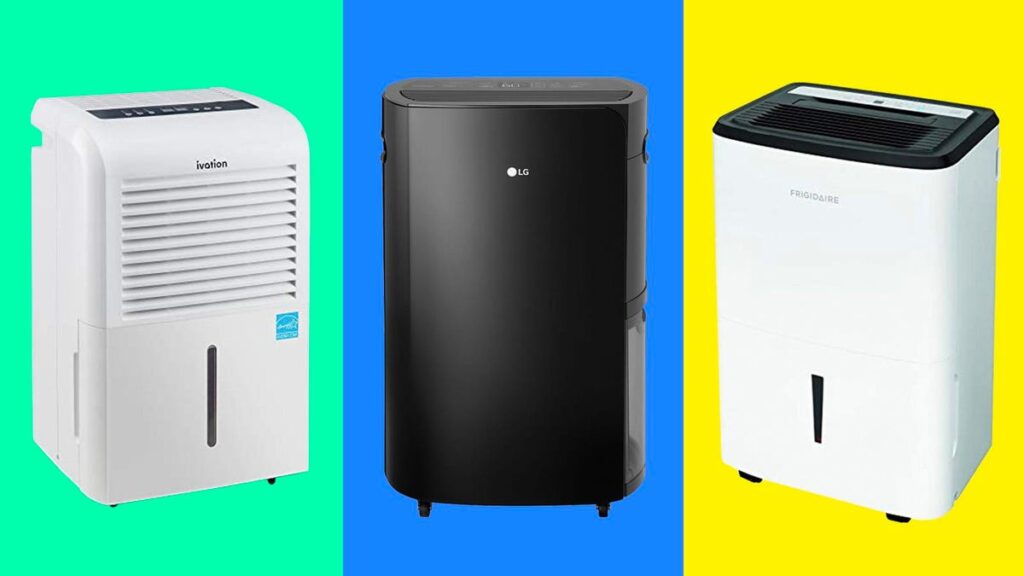
Note: The size and weight of dehumidifiers may vary depending on the specific model and brand.
8. Energy сonsumption
Running a dehumidifier constantly can add to your monthly electricity bill. The actual cost and energy usage of a dehumidifier depends on the specific model and its wattage, as well as the duration of its operation. Dehumidifiers can typically use between 20 to 250 watts per hour (kWh).
Some dehumidifiers come with energy-saving features such as auto-shutoff when the desired humidity level is reached or programmable timers, which can help manage energy usage. Additionally, choosing an Energy Star rated dehumidifier, which meets certain energy efficiency standards, can also help reduce energy consumption and save on electricity costs in the long run.
9. Cost of a dehumidifier
The upfront cost of a dehumidifier may be a deterrent for some people, especially if they are on a tight budget or have other financial priorities.
It’s recommended to do thorough research on affordable dehumidifiers, compare different options, and choose a dehumidifier that offers the best value for your specific requirements and budget.
Compressor dehumidifiers with larger capacities and higher energy efficient ratings tend to be more expensive than smaller and less efficient models. Additionally, high-end models from top brands can also come with a premium price tag.
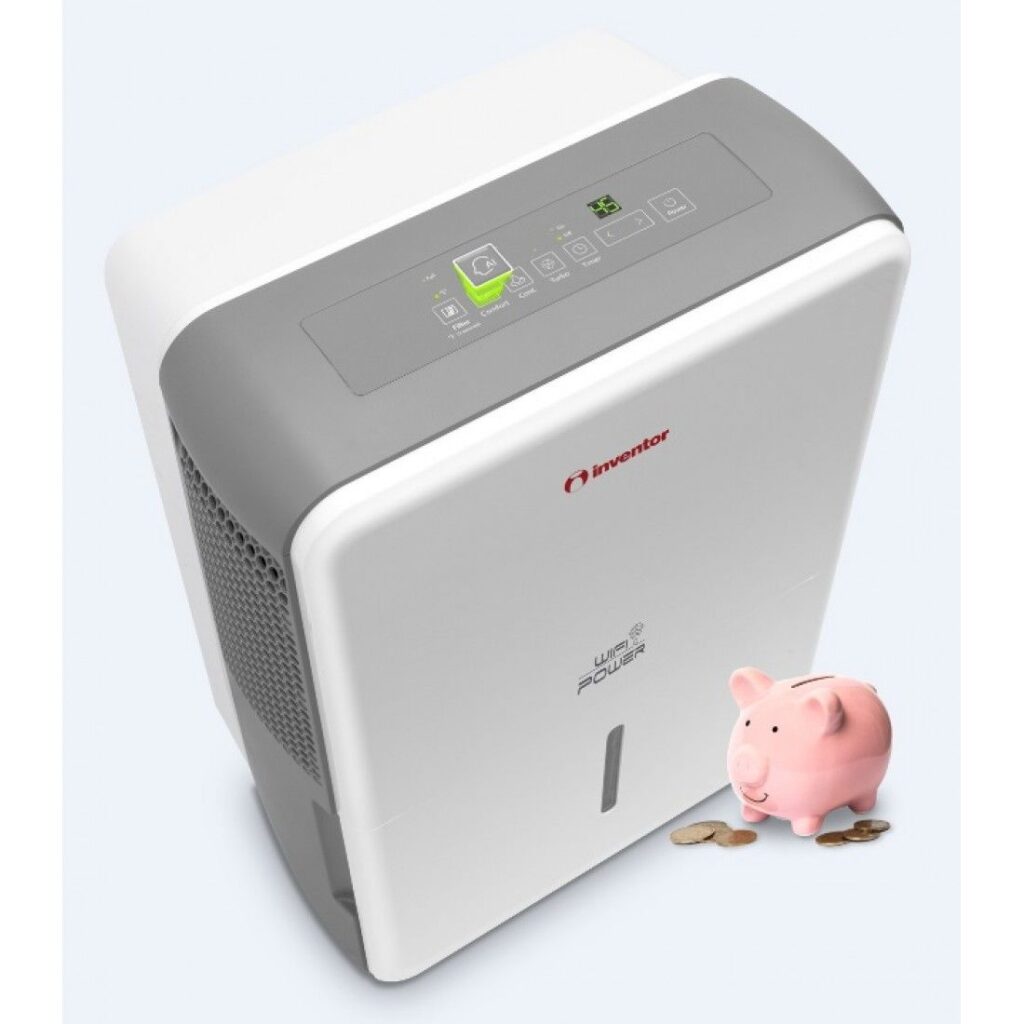
10. Indoor air quality
In order for a dehumidifier to work optimally, it is recommended to reduce ventilation by closing windows, doors, and other means of air exchange. This is because outdoor warm air currents can introduce more moisture into the indoor environment, which can offset the dehumidification process of the dehumidifier.
However, it’s important to note that proper ventilation is crucial for maintaining healthy indoor air quality and health conditions. Fresh outdoor air helps to dilute indoor pollutants and improve indoor air quality. Therefore, it’s important to strike a balance between using a dehumidifier to the air conditioner reduce excess humidity and maintaining adequate ventilation for healthy indoor air.
Disadvantages of desiccant dehumidifier
While desiccant dehumidifiers have several advantages, they also come with some potential disadvantages, including:
Higher upfront cost: Desiccant dehumidifiers tend to be more expensive upfront compared to refrigerant dehumidifiers. The cost of the desiccant material, as well as the technology used in the dehumidifier, can contribute to the higher price tag.
Lower moisture removal capacity: Desiccant dehumidifiers typically have a lower moisture removal capacity compared to refrigerant dehumidifiers. This means that they may not be as effective in larger areas with high moisture loads or very dry climate with high humidity levels.
Regeneration energy consumption: The regeneration process in desiccant dehumidifier requires additional energy, such as heating the desiccant material or using a separate airstream to dry it out. This energy consumption can add to the operating costs of the dehumidifier.
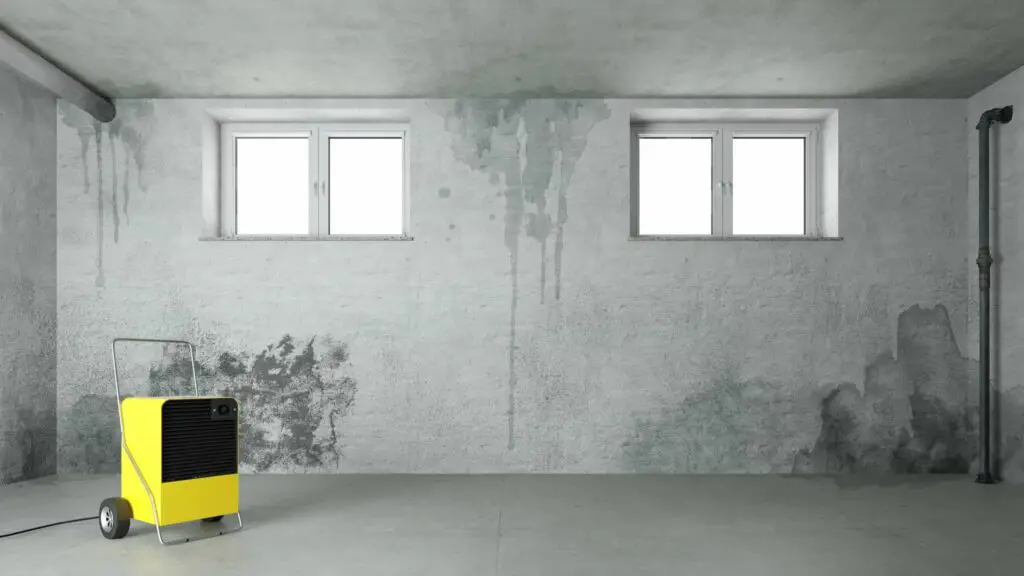
Disadvantages of compressor dehumidifiers work
Frost buildup: Compressor dehumidifiers can also experience frost buildup on the coils in very cold temperatures, which can reduce their efficiency and cause damage to the unit. Some models have automatic defrost features to prevent this, but it’s still a potential issue to be aware of.
Operating temperature: Compressor dehumidifiers are less effective in colder temperatures, typically below 65 degrees Fahrenheit. This means that they may not be suitable for use in cooler basements or garages.
Noise: Compressor dehumidifiers tend to be noisier than desiccant dehumidifiers because they use a compressor to cool the coils and extract moisture from the air. This can be a problem if you plan to use the dehumidifier in a bedroom or other quiet space.
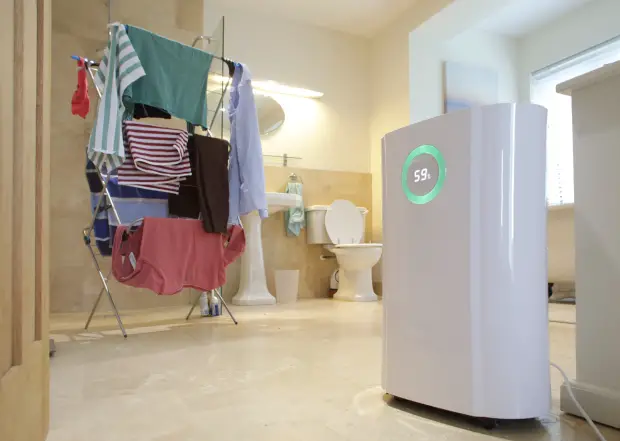
What Is a excess moisture in a house?
Signs of high humidity in a house may include:
1. Condensation on windows, walls, or other surfaces
2. Musty or moldy odors
3. Mold or mildew growth
4. Difficulty in cooling the house
5. Discomfort and stickiness

The American Society of Heating, Refrigerating and Air-Conditioning Engineers (ASHRAE) recommends keeping indoor humidity levels below 65 percent to prevent such as mold growth and damage to building materials. The Environmental Protection Agency (EPA) advises maintaining indoor humidity levels in a range between 30 and 60 percent for optimal comfort and to prevent health and structural problems.
Conclusion
While many dehumidifiers can can be beneficial in reducing excess moisture in a home’s air, they also have potential disadvantages, including increased energy consumption, noise, maintenance requirements, initial cost, limited impact on other indoor air quality issues, and the potential for over-drying. It’s important to carefully consider these factors and choose the right dehumidifier for your needs, as well as properly maintain and operate it to ensure it provides the desired benefits without causing any unintended negative effects.
Read more: What to do with dehumidifier water? Ways
When should you not use a dehumidifier?
Most conventional refrigerant-based dehumidifiers are not designed to operate in temperatures below 60°F (15.6°C) as the moisture removed from the air can condense and freeze on the coils, potentially causing damage to the unit.
What is the downside of a dehumidifier?
Some common downsides of dehumidifiers include: energy consumption, noise, maintenance, heat generation. It’s important to consider these factors when deciding to use a dehumidifier and determine if the benefits of reduced humidity levels outweigh the potential downsides.
Is it worth having a dehumidifier?
Whether or not you need a dehumidifier depends on the relative humidity (RH) levels in your home and your specific needs. The ideal relative humidity for most homes is generally considered to be around 50%. If your home’s relative humidity consistently exceeds 60%, it may be necessary to use a dehumidifier to lower the humidity levels and prevent issues such as mold growth, musty odors, and damage to furniture or other belongings.
Is it bad to sit in a room with a dehumidifier?
In general, sitting in a room with a dehumidifier operating should not be harmful as long as the dehumidifier is properly used and maintained according to the manufacturer’s instructions.
Can a dehumidifier make a room too dry?
Yes, a dehumidifier can potentially make a room too dry if it is operated for an extended period of time without monitoring the humidity levels or without adjusting the settings appropriately.

